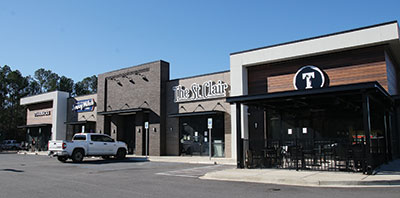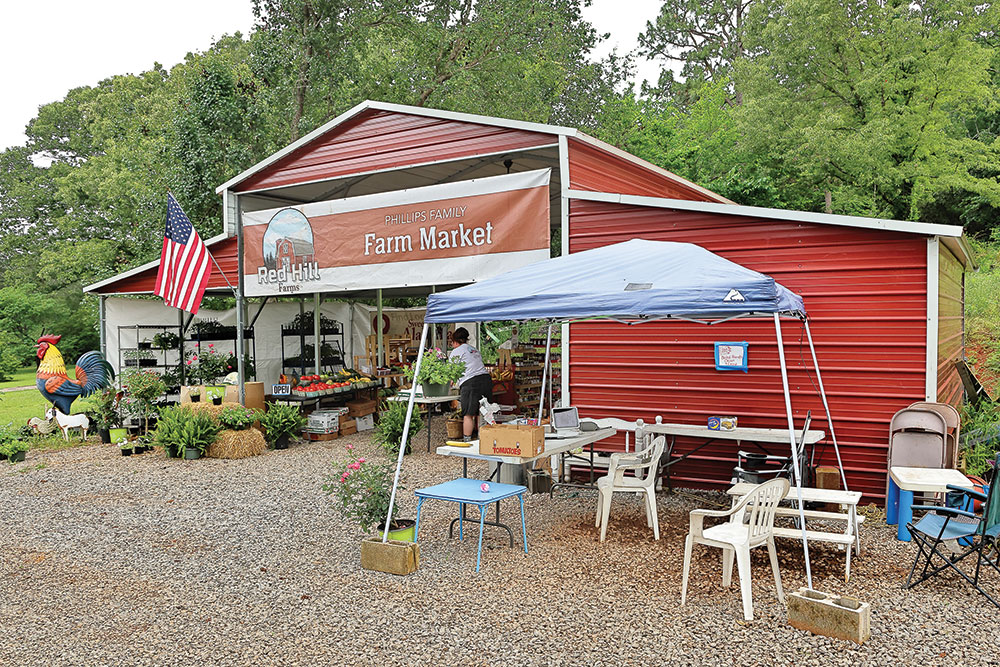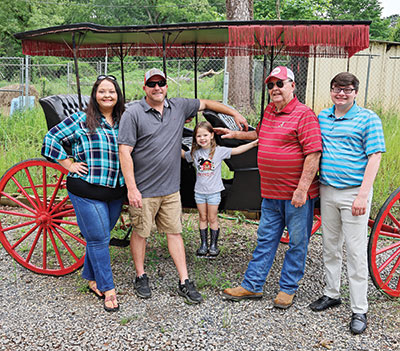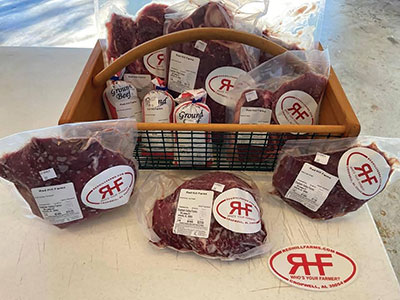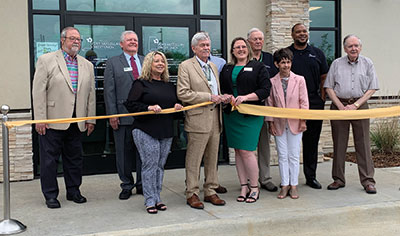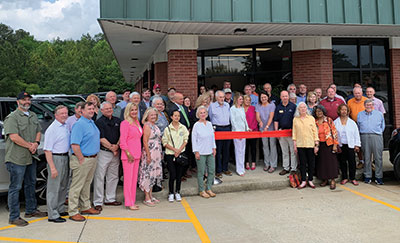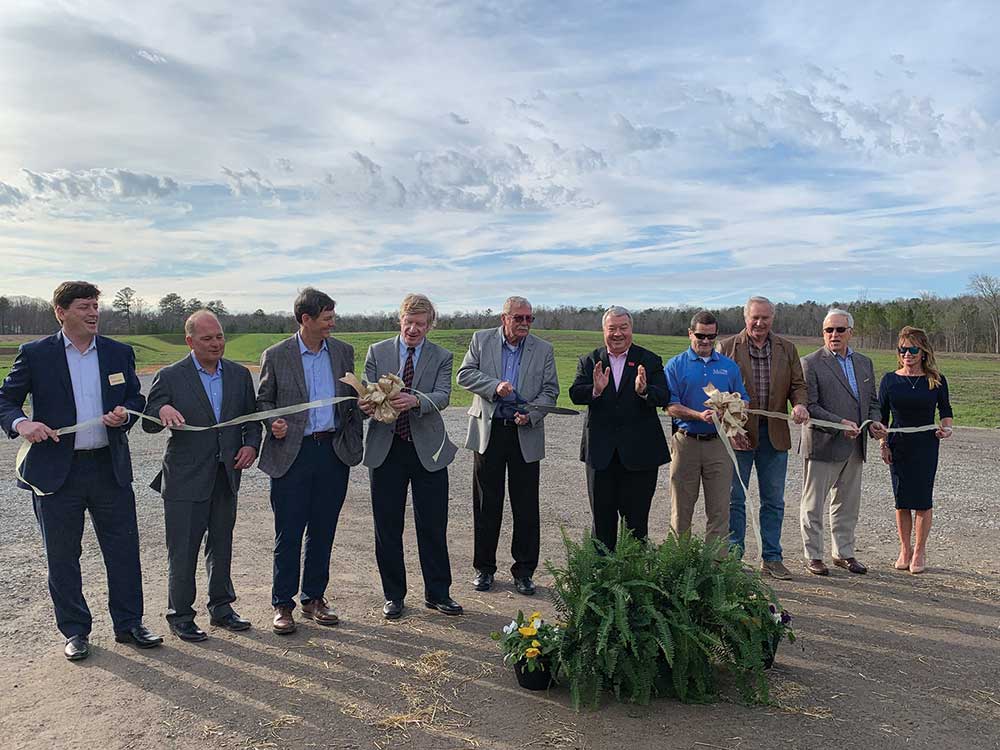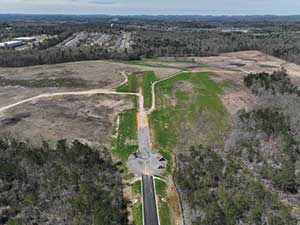From camper to storefront, cake creator cooks up success story
Story by Scottie Vickery
Photos by Mackenzie Free
For lots of folks, the idea of graduating from high school a year early and building your own business from scratch at 18 would be a tad daunting. For Klarissa Hendrix, it was a piece of cake.
Her mobile bakery business was such a hit, in fact, that three years later she decided to mix things up and make it permanent. This past December, she opened Klarissa’s Cakery in an Odenville storefront and has enjoyed sweet success ever since. It turns out that her ability to dream big and willingness to take some risks, coupled with a lot of hard work and creativity, were the perfect ingredients for a booming business.
“From sunup to sundown, I’m going all day,” she said, adding that she starts baking around 5 each morning. “Most Saturdays, we have a line outside waiting on us to open. It’s been crazy.”
Customers can’t get enough of the mouth-watering treats, which include an ever-changing assortment of cupcakes, brownies, cookies and cakes that are sold whole or by the slice.
Her cake decorating skills help set her apart, and she’s created everything from beautiful tiered wedding cakes to cakes featuring superheroes, lobsters, unicorns, footballs and mermaids – all handmade from fondant icing. “Sometimes people will bring in pictures of what they want, but I love when they tell me I have free rein,” Klarissa said.
Her cakes come in all shapes and sizes, as well. She’s crafted cakes shaped like baseballs, whiskey barrels, pineapples and an RV. Her most popular cake is a Highland cow.
Cupcakes flavors range from strawberry, wedding cake, watermelon and orange Dreamsicle to pina colada, red velvet, lemonade, pistachio, banana pudding and key lime pie.
She’s pretty much done it all – well, almost. “I still really want to do a pickle cupcake,” Klarissa said with a grin.
Although lots of her customers are new fans, many were familiar with her cakes and cupcakes from her first business, Klarissa’s Cakes and Cupcake Camper. In addition to making custom cakes and filling cupcake orders, she hosted birthday parties and sold cupcakes at pop-up events – all from her refurbished 1970s camper.
“I went to Tennessee with it and took it to all kinds of events,” she said. “I’d do birthday parties and let the kids decorate cupcakes, and I even took it to schools so teachers could decorate them. It was a cute party idea, and people loved it.”
At the time, it was a great way for Klarissa, who had always planned on being a cosmetologist, to explore a new dream that was just beginning to take shape.
Cooking up a career
Klarissa, who lives in Springville, first began baking as a child. “My mom started letting me use the oven when I was about 9 years old, and I loved watching Cupcake Wars,” a televised cupcake-baking competition on Food Network, she said.
Her grandmother, Vicki Smith (also known as Gammy) has always baked for the family’s holidays and provided additional inspiration. Once they started baking together and exchanging ideas, Klarissa’s excitement grew. “Gammy really helped me,” she said. “We teach each other.”
When Klarissa turned 16, her grandmother made her a cake that featured a sculpted purse with makeup brushes, powders and lipsticks she made out of fondant, an icing that can be molded, shaped and rolled. “I saw her making all these amazing things, and they looked so real,” Klarissa said. “I got really excited about it, and I’d go to her house, and we’d try out all these new flavors and decorations.”
About the same time, Klarissa was working part-time at a bakery in Trussville and began to have second thoughts about cosmetology school. “I didn’t know what I wanted to do,” she said. “I took a tour of the cosmetology school, and it didn’t really feel right, so I started praying about it.”
Although Klarissa didn’t know what her future held, she knew she wanted it to come quickly. “I was the type who was ready to be done with high school and wanted to start working,” she said. Klarissa, who was homeschooled through Faith Community Christian School, worked hard so she could graduate a year early.
By then, friends were asking her to fill cupcake orders. She got a request for her first wedding cake and began thinking she might be able to turn the hobby she’d fallen in love with into a career. “I knew I couldn’t open a storefront at 17, and I began thinking about a food truck,” she said. “The next day, a friend posted a camper for sale.”
Her parents, Leslie and Bridgett Lupton, renovated the camper while Klarissa focused on baking at home and getting the necessary licenses and permits. Soon, she was able to take her business on the road – literally – and she hasn’t looked back since.
“It’s been working out so far,” she said, adding that after running the Cupcake Camper business for several years, she was ready to find something permanent. After finding the perfect storefront in Odenville, her family, which now included her husband Kody, helped get it ready for the opening in December – just months before her 22nd birthday.
Forecasting success
Opening day was a busy one. “We sold out in the first hour,” Klarissa said. “My grandmother and I were trying to throw cupcakes and cookies in the oven, so we’d have enough to sell. December was a crazy month. We had 27 cakes go out in one day alone, and it really hasn’t slowed down at all.”
Although she’s got lots of repeat customers and is busier than she ever dreamed, Klarissa said she got one review that was extra-special. James Spann, the chief meteorologist for ABC 33/40, declared a creation she made to be “one of the greatest cakes ever.” Spann posts photos on social media of the hundreds and hundreds of decorated cakes and cookies he gets when visiting schools to present weather programs.
“I’ve always wanted to do a James Spann cake,” Klarissa said. She got her wish a few months ago when Leeds Primary School placed an order. “I immediately called Gammy and said, ‘We’re doing a James Spann cake.’”
Although the planning took a while, the pair spent about a week making the different pieces of the creation. It featured a house with an overturned car, a swaying tree, and a tornado with a trampoline in it since Spann often refers to trampolines that go airborne during storms as the “state bird.” The cake, which was completely edible, also showed a family wearing appropriate safety gear in front of a television in the basement.
“One of the greatest cakes ever,” Spann posted. “It even features someone wearing a helmet watching our live coverage in an underground basement. Amazing!”
Not just desserts
Not long after opening her bakery, Klarissa began getting requests for breakfast, so she now offers sausage balls and a variety of muffins. “I want to say I have the best sausage ball recipe,” she said. “I know that’s a bold statement, but I stand by it,” she said.
Breakfast has been such a hit, she hopes to one day be able to offer lunch as well. For now, though, she’s going to enjoy her success and the fact that her family has been a part of it all. Her grandmother does some of the baking, her mother helps at the counter a few days a week, and her 16-year-old sister, Chloe, has started working there, too.
Although Klarissa wasn’t sure she could make a bakery business work, her mom said she and her husband knew it would be a success. “We knew she was too young at 17 to enter into a legal contract, but the camper was a great way for her to start,” Bridgett said. “She took it and ran with it. She’s always been so mature for her age, so we didn’t doubt she could make it.”
















